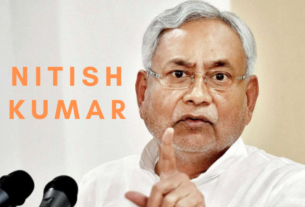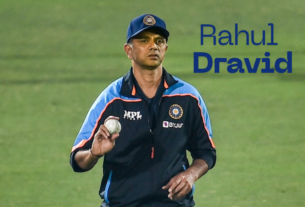Mamata Banerjee, formly known as “Didi,” is a name that resonates deeply within the political landscape of India. Her journey from a small town in West Bengal to becoming the first woman Chief Minister of the state is an inspiring tale of determination, grit, and unyielding courage. Mamata’s rise in Indian politics has not only shattered the glass ceiling for women but has also significantly impacted the political dynamics of the country.
Early Life and Beginnings
Born on January 5, 1955, in Kolkata, Mamata Banerjee grew up in a middle-class Bengali family. Her father, Promilesh Banerjee, was a freedom fighter, and her mother, Gayetri Devi, was a housewife. From a young age, Mamata exhibited a strong sense of social justice, which laid the foundation for her future in politics. After completing her schooling in Kolkata, she went on to study history at the University of Calcutta, and later, she completed her M.A. in history, as well as degrees in education and law.
Mamata’s involvement in politics began during her college years when she joined the Indian National Congress (INC) youth wing, known as the National Students’ Union of India (NSUI). Her early experiences as a student activist marked her as a strong voice for the underprivileged and marginalized. She came to prominence in the 1970s when she was actively involved in agitations against the then-leftist government in Bengal.
A Political Rise
Mamata’s political career formally began in the 1980s when she joined the Indian National Congress. She quickly became known for her passionate advocacy for the rights of the common man, particularly the youth and women. Her early work in Congress was centered around social issues, and she developed a reputation for being a fearless leader who never hesitated to speak up against corruption or injustice.
In 1984, Mamata made her first significant leap into the national political arena. At the age of 29, she contested the Indian general elections from Kolkata South constituency and became the youngest-ever woman to be elected to the Lok Sabha (the lower house of India’s Parliament). This victory was a turning point in her political career. It signified that she was not just another politician but a force to be reckoned with.
Mamata’s dynamic presence in the Parliament, her tireless campaigning for the people, and her ability to strike at the core of issues earned her the title of “the voice of Bengal.” However, her relationship with the Congress party started to sour in the 1990s, as she became disillusioned with the central leadership’s policies. Her growing differences with the party eventually led her to break away and form her own political entity, the Trinamool Congress (TMC), in 1998.
Building Trinamool Congress
The formation of the Trinamool Congress marked a new chapter in Mamata’s career. She set out to create a party that could challenge the dominance of the Left Front government in Bengal, which had ruled the state for over three decades. Her approach to politics was simple but effective: focus on the issues that directly impacted the common people, particularly farmers, women, and the working class.
Mamata’s rise to power was marked by her campaigns against land acquisition policies, particularly the infamous Singur and Nandigram agitations. In both instances, she mobilized the masses, with a focus on protecting farmers’ rights and preventing land from being taken away for industrial projects without adequate compensation. These movements earned her significant public support and enhanced her image as a champion of the people.
The 2007 Nandigram violence, where farmers clashed with the police over land acquisition for a Special Economic Zone (SEZ), was a defining moment for Mamata. She became the voice of the farmers, leading protests and speaking out against the injustice faced by the rural poor. The events garnered national attention, and Mamata’s TMC gained widespread popularity.
Chief Minister of West Bengal
Mamata Banerjee’s most significant triumph came in 2011 when her party, the TMC, won the West Bengal Legislative Assembly elections, ending 34 years of communist rule in the state. She became the Chief Minister of West Bengal, making history as the first woman to hold the position. Her victory was seen as a monumental shift in Bengal’s political history, and it was a testament to her ability to rally the people behind her cause.
As Chief Minister, Mamata focused on improving the state’s infrastructure, education, healthcare, and agricultural sector. One of her key achievements was the implementation of the “Kanyashree Prakalpa” scheme, which aimed at empowering young girls through financial assistance for education. The initiative won international recognition and was lauded by the United Nations for its impact on the social and economic upliftment of women.
Mamata’s tenure also saw significant improvements in the state’s road infrastructure, the expansion of the power grid, and the launch of schemes aimed at providing health insurance to the poor. Her government was particularly vocal in protecting the interests of the farmers, with policies to support rural development and agriculture.
Facing Challenges
Despite her accomplishments, Mamata’s tenure as Chief Minister has not been without challenges. Her party has faced criticism for its alleged involvement in corruption, and there have been concerns about law and order in the state. However, Mamata has consistently weathered these storms by standing firm and showing resilience in the face of adversity. Her critics argue that her administration has at times been autocratic and failed to address certain key issues, but her popularity among the masses remains strong.
She has also faced political battles on the national stage. Mamata’s TMC was instrumental in forming the opposition alliance to challenge the dominance of the Bharatiya Janata Party (BJP) in the 2019 general elections. Despite not winning as many seats as expected, Mamata emerged as a key political figure and one of the most vocal critics of the Modi government.
Mamata’s Legacy
Mamata Banerjee’s journey from a small-town girl to the Chief Minister of West Bengal is a remarkable success story. Her rise represents the power of perseverance, integrity, and a relentless drive to challenge the status quo. Mamata has broken down numerous barriers, not only for women in politics but also for marginalized communities. Her ability to connect with the masses and advocate for their rights has made her one of the most influential leaders in modern Indian politics.
Her success story is a reflection of her indomitable spirit and commitment to serving the people of Bengal. Mamata’s leadership has redefined the political landscape of West Bengal and has paved the way for future generations of women and youth to step into the political arena. She has proven that with the right mix of determination, vision, and passion, any challenge can be turned into an opportunity for success.
Conclusion
Mamata Banerjee’s success story is a beacon of hope and inspiration for many aspiring leaders in India. Her rise to prominence, fueled by her dedication to social justice and her fierce determination to fight for the people, has made her an icon in the Indian political landscape. Despite facing numerous challenges, Mamata’s unwavering spirit continues to inspire millions, making her one of the most significant political figures of her time. Through her leadership, she has not only reshaped the future of West Bengal but has also cemented her place as one of India’s most powerful women in politics.





